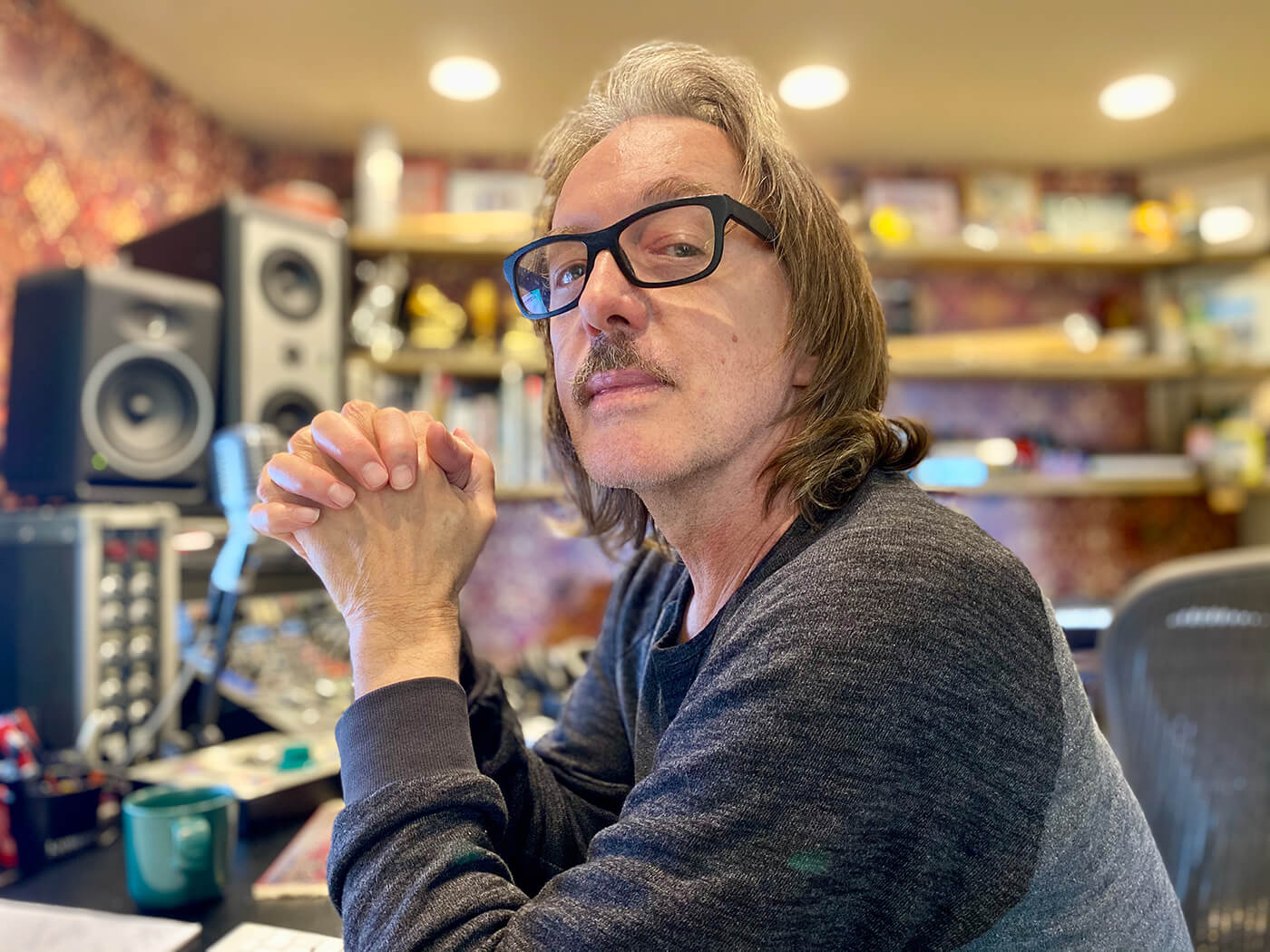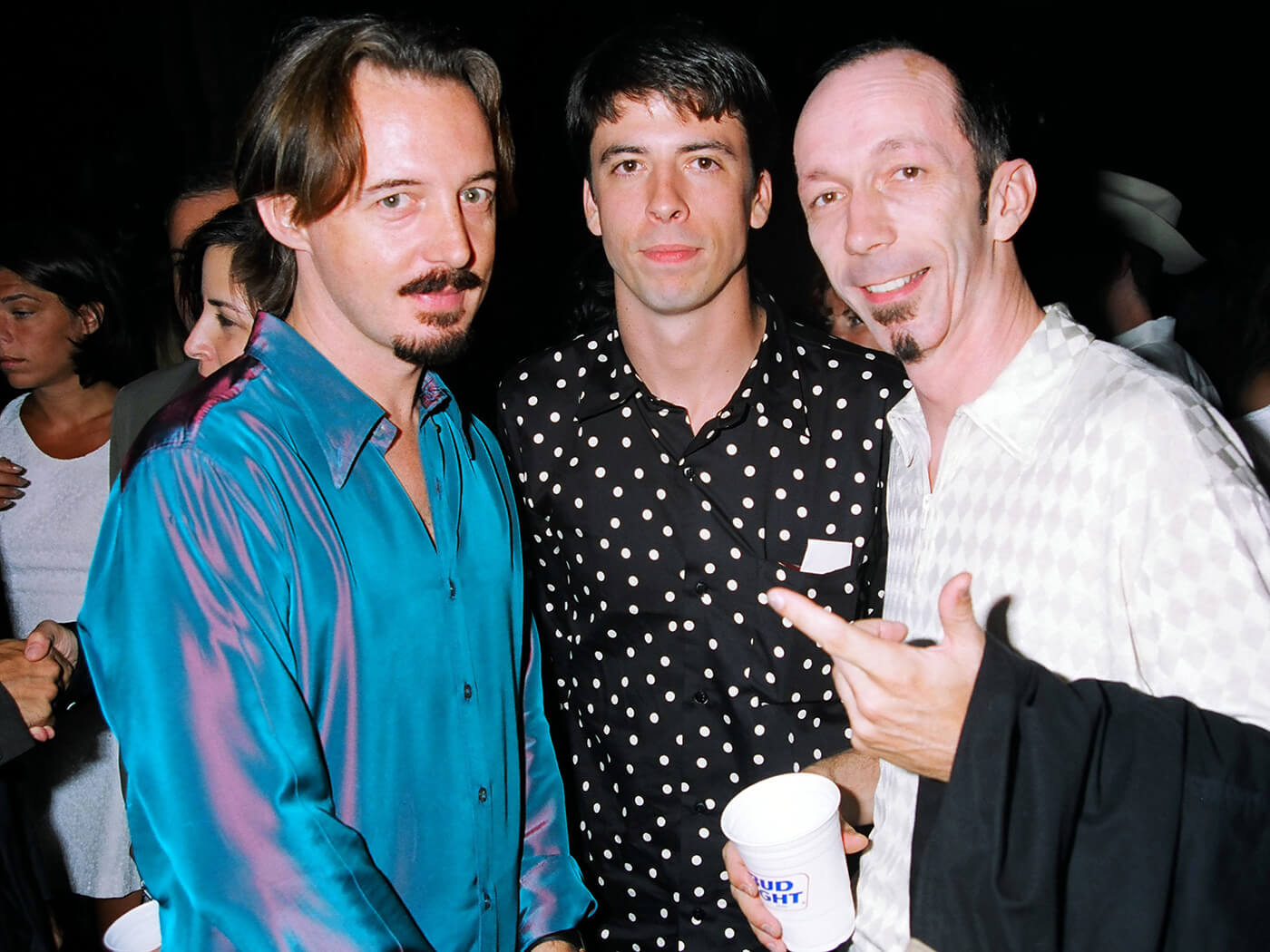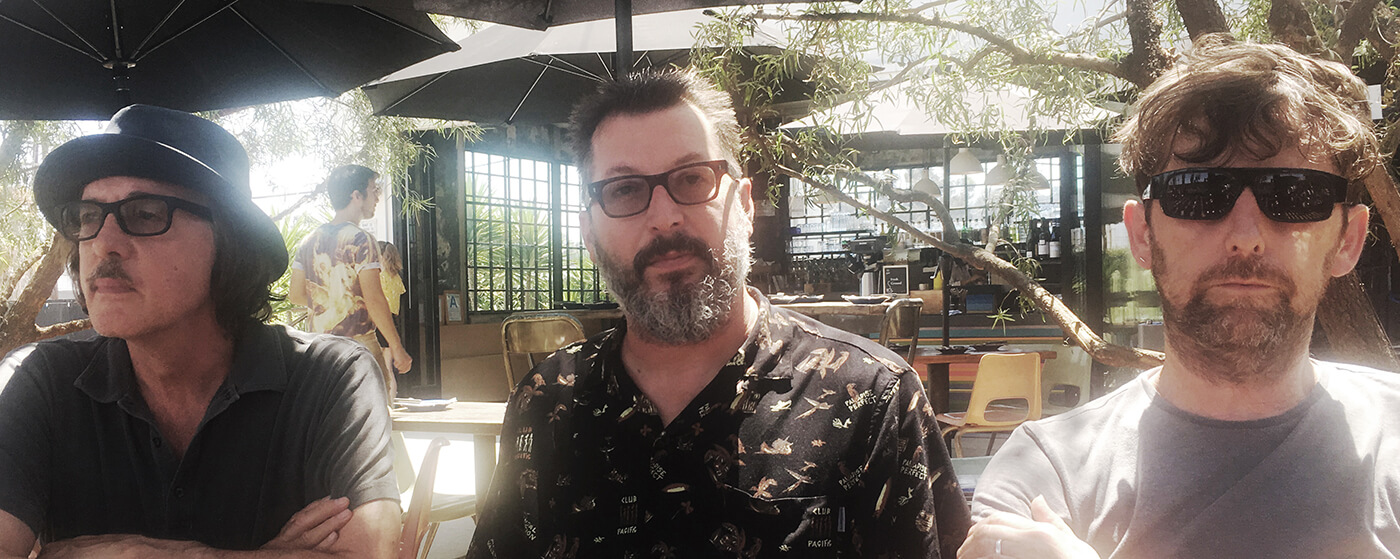Butch Vig shares the guitar recording secrets of Nirvana, The Smashing Pumpkins, Foo Fighters and more
As his latest project, 5 Billion In Diamonds, release a new, genre-defying album, we ask the super-producer to guide us through his process for recording our instrument…

Image: Bo Vig
Butch Vig might be a drummer, but as a man who has captured the guitar magic of Kurt Cobain, Billy Corgan, Thurston Moore, Billy Joe Armstrong, Dave Grohl and many more players he is perfectly placed to talk to us about how to get our own best performances on tape. And it all begins with asking yourself some overarching questions.
“The first thing I need to work out when recording guitar,” Vig tells us, “is what sort of tone do we need: should it be a clean tone or thicker? Is it going to have effects on it? Is it a rhythm part, or a lead part, or a melodic part, because understanding that will help to dictate how the amp should sound, or what kind of guitar you should use.
“And then you have to figure out how the guitarist plays: are they a thrasher or a finesse player? Are they punk rock rudimentary? Because that can also dictate what kind of set-up you want.”
A good start
The potential destinations from that starting point are infinite, but you have to start somewhere, and for Vig that is with the familiarity of a long-time favourite amp.
“What you use depends on the song, but for example on the 5BID record there are a lot of songs that have strummy acoustics blended in with electric guitar, and typically if I’m going for something like that – a bed with rhythm – I’ll lean towards classic amps that I’ve used before such as Vox AC30s, which are some of the best amps for strummy electric guitars. Then if I want to dirty it up I’ll use pedals to get overdrive.”

Going digital…
Not everyone has access to a wide range of physical equipment, but this is where Vig recommends turning to your laptop.
“I have a lot of guitar simulator plugins on my computer, and they work pretty well, so sometimes I’ll record two tracks with a guitar – one going into the amp with a microphone, and I’ll also record it at the same time with a DI straight into ProTools. Then if I want, I can run that DI into one of several amp simulators – and a lot of those sound really good – and then if you want you can blend those together. You can emphasise the clean part, but then if you have a part you want to thicken up you can blend in the fuzz from the ProTools for the chorus or whatever. It gives me more options.”
In the mix
Mixing guitars is a Vig speciality, famously using enormous numbers of guitar parts on some of those hit 90s albums. And tracking multiple guitar parts into the mix is still something he recommends.
“I do like to double-track guitars, especially clean ones, because I like to get them very tight and then pan them left and right for a widescreen sound that leaves the middle open for vocals and other lead instruments. The same thing with recording acoustic, whenever I do that I always double it. If there wasn’t a double then sometimes I’ll pan it left, then run it through a delay set at just 20 or 30 milliseconds, so it separates it just enough that it feels like a left/right. But again it puts the guitar out in the corners so it leaves room up the middle for the vocals and snare drum, or piano riff, or whatever.”
Not that Vig stops at double-tracking, taking things to the ultimate when working with Billy Corgan on Smashing Pumpkins’ second album…

“Siamese Dream is probably the album I have recorded the most guitars on. I mean, a song like Hummer, at some point, probably had 50 or 60 guitar parts on it. And we had to be really focused when we were layering all those, to make sure that each sound fit in with the other layers. You can’t just start piling one on top of the other, 10 guitar tracks with the same tone, it’s just going to sound like mud. So we got really good at figuring out how to find frequencies in a particular guitar track and blend that with another frequency. It was time-consuming, but I think the record sounds really good as a result because it does sound really big, but very focused. You can really hear the tones.
“Billy Corgan is a pretty badass guitar player – he’s really, really talented, and he also always had a really good understanding, sonically, of what he was going for.”
Even so, both Corgan and Vig kept themselves open to new ideas, and when one presented itself by accident, seized upon it.
“The engineer at the studio, Mark Richardson, had a weird lap steel guitar that had this little button you could flick, and it was a distortion unit. I asked him if he could take it out, so he took the thing apart and took out was this tiny little box and we started using that for some of the overdrive. Billy still has it. And it just had this most insane buzz, it just would kind of stir your brain right up. But it had a really narrow focus too, and we used that on a lot of the lead solo parts on Siamese Dream, because they just had a real specific frequency. And it was just something that happened to be at the studio, and then we discovered it and ended up using it.
“Coincidences and mistakes are amazing, you know? The title of the new 5 Billion In Diamonds record, Divine Accidents, came about from [bandmate] James [Grillo] and I watching a documentary on Orson Welles. About two thirds the way through he said the best things about making films were the divine accidents and we looked at each other, Okay, that sounds like a good album title.”
Lab rat
Those happy accidents can be encouraged along by a sense of experimentation, and Vig is keen to stress that everyone should try the unknown when recording music. If you have an idea then it might work, or it might not, but don’t leave the studio not knowing.
“That’s the great thing about being a recording studio. There are so many different options now for musicians, whether it’s in a digital system like Pro Tools or Logic or whatever, or just analogue pedals with amplifiers and microphones – you have this giant palette to paint with. And I always encourage people to spend time to do that.
“You know, it’s cool if you just want to get something done quick and you have a specific sound in mind, but I love lab rat days. With Garbage we would have days where Shirley would just say, I’m not coming into the studio so you guys can go ahead and nerd out all day long and just record crazy guitar stuff. Some days we’d record all day and not use anything but it’s fun. And sometimes you find one little thing and that becomes a hook or a loop somewhere and then that ends up being in song and I love doing those kinds of things. I always encourage young artists to do that to take some chances and experiment.”
That sense of experimentation lead Vig to exclude amps altogether at certain points when recording Nirvana’s era-defining Nevermind album.

“I remembered reading about one of The Beatles’ songs, I think it was Helter Skelter or something, where John Lennon said that he just plugged direct into a preamp – there was no actual amp – and they just turned the gain up and got this crazy scratchy sound. And so and I used to do that at Smart [Vig’s famed studio] too, and I suggested that on a couple of the Nirvana songs [Breed and Territorial Pissings].
The rest of the album was recorded fairly basically as well.
“I think when we did Nevermind, Kurt had a Mesa/Boogie, and I rented a Vox AC30 because, as I said, I love the clear tones on those. I also rented a Fender Bassman. We had one at Smart Studios that we used all the time. One of the engineers called Doug Wilson had modified it. I don’t know what he did, but it was the fattest, crunchiest, thickest guitar tone. So I rented one in LA when we did Nevermind, and although it didn’t sound quite the same, we used that on Lithium and for some of the really heavy tones as the main guitar amp.
“And we only used a couple of pedals. Kurt had a Big Muff. And I think I had a Russian Big Muff, which is, you know, very close. And he had a RAT. And then he had a Small Clone, which is sort of the watery effect on Teen Spirit in the verses. Come As You Are as well. But that was it; a pretty simple setup, really.”

Recording to tape…
Vig went back to basics when he reunited with Nirvana’s Dave Grohl on Foo Fighters’ 2010 album Wasting Light.
“When Dave approached me, the first thing he said was he wanted to record it in his garage. I was like, that’s cool. And when I drove out to his house and looked at the garage, he set up a kit and he started playing and I was looking around listening going, it’s small, but the live sound is pretty tight and punchy, we can make this work. And then he said he wanted to do it on tape. And I’m thinking, ‘Oh shit, I don’t want to go back and record on analogue tape’, even if I was really good at it.
“The thing is, and I told this to the band, it’s all about the performance on tape. I can edit it, but I can’t pitch correct something, if the timing’s off I can’t shift it, and I kept telling the band this, ‘you guys have to play your asses off because what you record will be what’s on tape’, and they all rose to the occasion. I think because of that Wasting Light is the truest representation on record of what the Foo Fighters sound like live, you know?”
Manipulating sound
Vig is clearly someone who these days makes the most of the digital options available to him, but even when recording analogue lot he insists there is a lot you can do to manipulate sound… things just take more time to get right.
“If you’re using an amp, there’s so many things that come into that. You can put a Shure 57 in front of it, you can put a large diaphragm mic in front, you can move the mic back… if an amp is quite bright, I use ribbon mics a lot because they have a softer top end, and sometimes they will focus the mid-range in a really nice way.
“Sometimes I multi-mic a cabinet, but you have to be really careful with the phasing. If you put three or four mics at a cab, you might get some notches in the mid-range or the bass where things get overextended or they get cut out, so you have to be really careful when you’re setting them up to make sure the phasing is good.
“But if the passing is good it can be a helpful technique, so you can put a 57 or bright condenser on an amp and then put a large diaphragm mic like a U87, or ribbon mic, which is a totally different colour, and then you can blend.
“But no rules. It’s fun to record guitars because there’s no such thing as an exact way to do it. Each musician or engineer should experiment and find what they think sounds cool.”

Golden rule
Before we let Butch go, we wanted to know if there was one thing he recommended that anyone recording music, and guitars in particular, should always try to do…
“Well, that’s tough question. First of all, it helps if you have a great guitar that you like to play. Obviously, every guitar is different, but you want something that, in theory, is intonated pretty well and in tune. Although if you’re a band like Sonic Youth [Vig recorded their 1992 album Dirty and its 1993 follow-up Experimental Jet Set, Trash and No Star], you throw that out the window because their whole sound is this based on the kind of dissonance that their guitars create from all the unusual tunings.
“But I think the most important thing is to remember how a guitar is going to sit in a song, you know? Is it there as a support? Is it the main riff? Is it going to drive the song? Is it supposed to fit under things? Try to try to understand how that will work. This is coming from me as a producer rather than a guitarist, you know, because a lot of musicians work on their own part and they don’t always listen that closely to the big picture of what a song should sound like. So it’s important to understand how the guitar should sit in the mix and what is supposed to do. That’s the big thing when you’re producing.”
5 Billion In Diamonds’ new album, Divine Accidents is out now on MAKE Records. Check out a podcast Butch did with MusicTech recently here.
